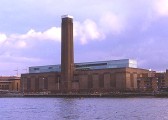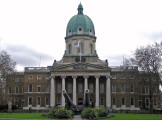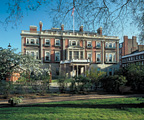Glorious Couture: An Exhibition of Royal Wedding Dresses
Originally published in December 2003 in The American in Britain Magazine
The exhibition, ‘A Century of Queen’s Wedding Dresses 1840-1947’, tells the story of one hundred years of memorable royal wedding gowns. The venue was at Kensington Palace in 2003 where five life size replica (queen look-alikes) mannequins wore the original Queen’s wedding dresses. We get to peek behind-the-scenes and learn about textiles, designers and the royals’ fashion history.
Have you ever thought about how much you can learn from an exhibition of wedding dresses? If not, it’s time to do so. Get out your 2003 diary and make a date to view ‘A Century of Queen’s Wedding Dresses 1840-1947’ on display at Kensington Palace until April 27 th. Most of us are used to seeing celebrities parade around in the latest fashion, but how often do we get a glimpse of royal wedding dresses? This exhibition is part of the Golden Jubilee celebrations and should not be missed. The last time the dresses were shown was in the 1970s; who knows when we will have an opportunity to see them again? There are five exquisite gowns displayed on life-sized mannequins made as replicas of Britain’s queens. Visitors can stroll at a leisurely pace while listening to detailed information provided on the free audio guide which explains the provenance and unique details of each dress. One hundred years of spectacular royal wedding fashions together for the first time!
A bride’s dress is always the centre of attention. Here we see royal wedding dresses as tangible evidence of memorable events in British royal history. The gowns are larger than life. Each monarch engaged their favourite designers who produced a design appropriate for the occasion. A traditional feature in the design and execution of each dress was to have British designers use exclusively British-made textiles and accessories wherever possible. When Queen Victoria married Prince Albert on 10th April 1840 in the Chapel Royal of St. James’s Palace, the silk satin for the dress was woven in Spitalfields, London. Lace used as trim was ordered by the Queen from the lacemakers of Honiton in Devon. Miss Jane Bidney, ‘lace manufacturer in ordinary to the Queen’ and owner of a business in St. James Street, Pall Mall, retuned to her native village in Devon to undertake her commission. Miss Bidney employed more than 200 workers between March and November 1839. Jewellery was ordered to complete the wedding outfit and consisted of a necklace made from Turkish diamonds and a large sapphire and diamond brooch, a gift from Prince Albert. A final touch was the Collar and Star of the Garter. Victoria had chosen a simple fashionable cream satin court dress comprising a bodice and skirt. Lace flounced trimming incorporated a design of scrolling foliage and large exotic flowers attributed to the painter William Dyce. Her court train was made of the same silk satin as the dress and measured six yards in length, with a border of orange blossom sprays which matched the garland worn on the young Queen’s head. The initial impression of Queen Victoria’s dress on display in the exhibition suggests it might be a miniature. However, she was a petit woman, only 4’11” in height at the time of her marriage to Albert. At the end of her life in 1901, judging from the size of her clothing, she had shrunk to 4’9″. In her case, size did not matter.
There are some amusing anecdotes connected with the design and execution of these dresses. For example, in the aftermath of the Second World War, rumours were spread that the silkworms which supplied the silk for Princess Elizabeth’s dress were Italian or Japanese and thus were from ‘enemy’ territories. Designer, Norman Hartnell, was relieved to learn that Nationalist Chinese worms had produced the silk. ‘British-made’ was ensured by weaving the silk at Lullingstone Castle in Kent. Intense speculation surrounded the making of this spectacular dress and Hartnell was determined to keep details a secret. To this end he whitewashed and covered the windows in his Bruton Street workroom in Mayfair with white muslin. The salon manager offered to keep guard by sleeping next to the room housing the dress. Nonetheless, a few aspects of the designs leaked out and a rough sketch appeared in The New York Times and then in a few British papers. Given the hard winter of 1947, with rationing and shortages, the public looked forward to the young Princess’s wedding to Lieutentant Philip Mountbatten in November at Westminster Abbey. The government gave the Princess 200 extra coupons as a wedding present to contribute to her trousseau. Women across the country sent their clothing coupons to the Princess but they had to be returned because it was illegal to give coupons away. In the event, the dress was delivered to Buckingham Palace on the eve of the wedding in a four-foot long box. It is truly a pièce de résistance!
Designers often find inspiration for their couture from works of art, nature, symbolism or events. And heirlooms often formed part of the outfit. Royal wedding dresses embody all of these features. It is noteworthy to learn that Hartnell was strongly influenced by Botticelli’s painting, Primavera, of Flora, the goddess of flowers. He represented these flowers on Princess Elizabeth’s dress by using raised embroidery in fine white crystal beads and more than ten thousand seed pearls on silk satin. Many of the beads decorating the dress were purchased from America, as supplies from Europe were limited in the immediate post-war years. Symbolically, the dress embodies the promise of growth and regeneration after the hardships of the War. The Queen Mother married Prince Albert, Duke of York (afterwards King George VI) at Westminster Abbey in April 1923. Inspiration for the design of The Queen Mother’s wedding dress was based on the simple lines of medieval style, with a deep square neckline and bold embroidery. Madame Handley Seymour, the court dressmaker, created a fashionable drop waist, with no darts, and the back extended to a separate train. The front of the skirt was gently pleated to the waist seam. An antique lace veil, lent to the bride by her future mother-in-law, Queen Mary, was held in place by myrtle leaves, a knot of white roses of York and white heather at each ear.
An extraordinary array of prominent accessories features in each of the five royal wedding gowns. When you visit the exhibition, take time to study the jewellery, tiaras, shoes, trains and veils, and, not least, the symbolism in the floral designs and bouquets. The skills, expertise and support for this project are due to the year-long preparation undertaken by the curators at Kensington Palace and textile restorers based in the Textile Conservation Studios located at Hampton Court Palace. Indeed, this exhibition is a labour of love in more ways than one.
Contact Abby Cronin. Website: www.abbycronin.co.uk
Email: artsjournalist@abbycronin.co.uk




